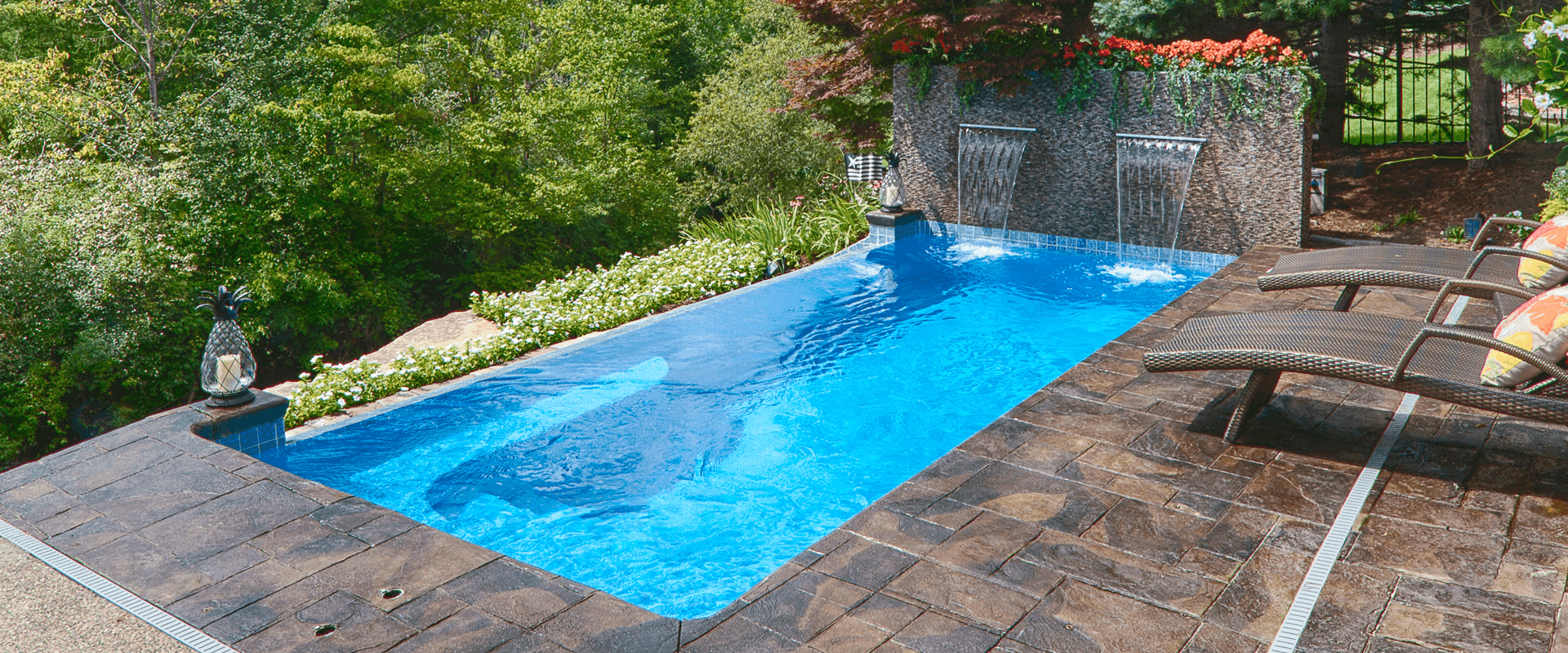877-929-7665
Ask the General: Can Dogs Swim in Pools?
Ask the General: Can Dogs Swim in Pools?
Dear General;
We are getting a new pool! Our kids are pretty excited about it. So is Harvey, our yellow lab. He loves to swim. However, several friends have told us we shouldn’t allow dogs in the pool. What’s your advice? Can dogs swim in pools? Do we have to ground poor Harvey when our new pool comes, or can we let him enjoy the dog days of summer?
— Dog lovers in Dayton, Ohio
Dear Dayton Dog Lovers;
 I have been asked “can dogs swim in pools” many times, as well as if we should let our pets in general use the pool. (This typically means our dogs, because I don’t know too many cats who like to swim.) Well, that’s kind of like asking if you should allow your dogs to sit with you on your furniture or sleep with you in your bed. Will it be easier to keep your furniture and bedding clean if you don’t? YES. Will you reduce the risk of damage to your expensive couch if you don’t have a dog launching itself off of it every time someone rings the doorbell? YES. But, if your answer to the question: “Is your dog one of your children?” is also YES, you might be willing to take on a little extra wear, tear and cleaning in order to have the joy of sharing your pool with your pet. But if you do, you’ll definitely want to choose the right kind of pool.
I have been asked “can dogs swim in pools” many times, as well as if we should let our pets in general use the pool. (This typically means our dogs, because I don’t know too many cats who like to swim.) Well, that’s kind of like asking if you should allow your dogs to sit with you on your furniture or sleep with you in your bed. Will it be easier to keep your furniture and bedding clean if you don’t? YES. Will you reduce the risk of damage to your expensive couch if you don’t have a dog launching itself off of it every time someone rings the doorbell? YES. But, if your answer to the question: “Is your dog one of your children?” is also YES, you might be willing to take on a little extra wear, tear and cleaning in order to have the joy of sharing your pool with your pet. But if you do, you’ll definitely want to choose the right kind of pool.
I once had customers mention during the sales presentation that one of the reasons for purchasing an inground pool was to have their dogs swim with them. This couple’s children had grown and they were “empty nesters.” They had previously owned a gunite pool, and had two golden retrievers that loved to swim with them. They didn’t want another gunite pool, but were worried about the dogs damaging a vinyl or fiberglass pool.
If you plan to let your dog swim, consider these facts
I’ll share with you the same advice I gave this couple. Basically, I’m not a fan of letting dogs swim, because of the extra pool maintenance it causes. But, if having your dogs swim with you is part of your joy in having a pool, of course you should do it. If that’s the case, here are some things you need to consider:
- Water quality. Dogs can bring contaminants into the water. If they’ve rolled in something in the backyard, it’s going to wash off in the pool. Even if you’ve recently given them a bath, the residue from the dog shampoo is going to end up in your water. You should be especially cautious if you live near a river, stream or lake and your dog also swims there as they can transplant algae into your pool that can be difficult and expensive to get rid of. So give them a good rinse before you let them jump in, and stay on top of your water chemistry.
- Pool equipment. Dogs shed. I have pulled big hairballs out of a pool pump’s impeller and piping that were causing poor circulation and could have caused a lot of damage to the pump. So, a good brushing before Harvey gets into the pool is a must. Install a fine filter screen in your skimmers. There are mesh filters available that will also help. (And here’s a hint from Heloise: knee-high panty hose can be put inside the skimmer basket to catch the hair before it heads to the equipment.) Always clean your skimmer basket and pump basket after your pet swims.
- Pet health. Dogs may drink the water while they’re swimming, ingesting chlorine and other chemicals. Needless to say, this is not good for the dog, especially if your chlorine level is running high. If you see your dog lapping up water, you’ll either need to keep them out of the pool or train them NOT to drink the water. On the flip side, swimming is as good for your pet’s joints as it is for yours and it’s great exercise for you and them!
- Pool structure. The couple with the golden retrievers were correct to wonder about damage to a vinyl liner pool. Your dog could rip a vinyl liner within the first few minutes of getting in, and it WILL NOT be covered by your warranty. By contrast, gunite pools have a rough enough surface that they can do damage to the pads of a dog’s feet. So, if having your pet swim with you is important, a fiberglass pool is the only way to go, for a number of reasons:
-
- An impervious surface. The gel coat surface of a good quality fiberglass pool will be impervious to scratches from your pet’s paws.
- Lower chemical use. Fiberglass pools require fewer chemicals to keep your water balanced, and algae can’t roost in the nooks and crannies that both vinyl liner and gunite pools have. So, even if sharing your pool with Harvey means you’ll need more pool maintenance chemicals, you’ll still use less in the long run.
- Easy in and out. Most fiberglass pool designs feature wide-open, non-skid steps that will help your pet navigate entering and exiting the pool. Many have tanning ledges and there are now also beach entry (zero entry) fiberglass pool designs (Patent US 10,358,837 and 10,472,839) on the market that will allow your furry kids (along with your two-legged kids) to ease into the water on a gentle slope.
Keep everyone safely in the swim
In our house, my dog thinks he’s a rescue dog. He jumps in to try to “save” us. He paddles around for a while, and then he tires, and we end up having to rescue him. Remember that some dogs are better swimmers than others. As with children, dogs need constant supervision in the pool and they need to enjoy the water safely. If you see your pet tiring, make them get out of the water and sideline them for a while. To keep both kids and pets safe, get a pool that’s auto-cover ready and keep it closed whenever your pool is not in use.
Till next time, safely enjoy your pool – The General
The world’s first truly zero entry fiberglass pools
Thursday Pools is the creator of the beach entry (or zero entry) fiberglass pool. Grace Beach Entry and Sandal Beach Entry (Patent US 10,358,837 and 10,472,839) are currently available to order, so you can bring the shore to your door with your new fiberglass pool.
